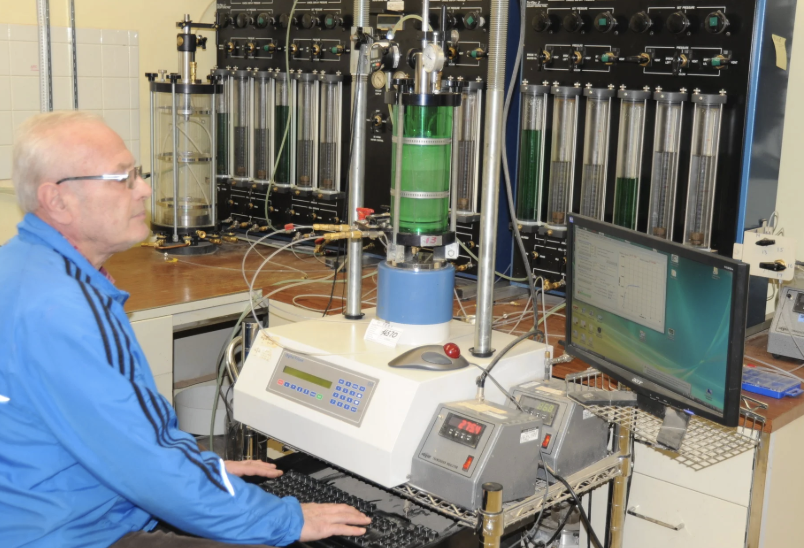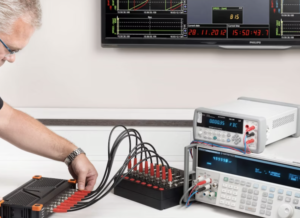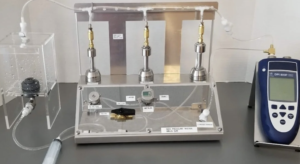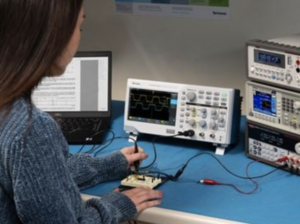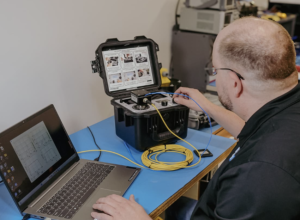Supplier Checklist: Questions to Ask Before Buying a Triaxial Test Data Acquisition System
Choosing a DAQ for triaxial testing is about more than channel count. The right system must match your sensors, sample cleanly and in sync, fit your software workflow, and scale with your lab. Use this checklist to interrogate suppliers and avoid costly rework.
Is the System Compatible with Your Current Sensors?
Questions to ask
- Which sensor interfaces1 are natively supported?
- What connectors are provided (BNC, 5-pin LVDT, DIN)? Are shielding/strain-relief options standard?
- Does the software support multi-point, up/down calibration (linearity, hysteresis) with certificate storage and expiry alerts?
- Can I store units/scale factors per channel and lock them in a versioned template?
What good looks like
- Native bridge conditioning with low-noise amps and 24-bit ADC for mV/V channels.
- Dedicated LVDT modules or proven AC excitation/demod approach.
- Mixed analogue + digital I/O on the same chassis; clear pinout docs.
- Calibration workflows with shunt-cal, zero/tare, and audit trail.
Evidence to request
- Datasheets showing excitation stability/noise; example calibration reports; a wiring guide for your exact sensors.

What Sampling Speed Does the System Offer?
Questions to ask
- What sampling modes3 are available: simultaneous vs. multiplexed? Is there one hardware clock for all channels?
- What max rates per channel and aggregate? What anti-alias filters4 are configurable (cut-off choices, filter type)?
- Typical settings for monotonic CU/CD and cyclic tests?
| Target settings (starting point) | Channel | Monotonic Sample Rate | Low-Pass Cut-off | Notes |
|---|---|---|---|---|
| Axial load / pressures | 10–20 Hz | 2–5 Hz | Clean effective-stress paths | |
| Displacement (LVDT) | 20–50 Hz | 5–10 Hz | Stable strain-rate control | |
| Volume change | 5–10 Hz | 1–2 Hz | Anti-alias before integration | |
| Cyclic (if applicable) | 100–1000+ Hz | Bandwidth-dependent | Simultaneous sampling required |
What good looks like
- Published noise (rms) / ENOB specs; per-channel low-pass filters; shared clock; simultaneous sampling option.
Evidence to request
- Raw data snippets (CSV) from a load cell at rest; filter configuration screenshots; clock/sync topology.

How Well Does the Software Integrate with Lab Workflow?
Questions to ask
- Are calculated channels5 built in? ( (q), (p’), ( \varepsilon_a ), ( \varepsilon_v ), B-value, stiffness windows )
- Can I script test stages6 (saturation → consolidation → shearing) with interlocks (over-pressure/over-stroke) and stop rules (strain limit, post-peak %, u-excess)?
- Does it support auto-save, checkpoint files, checksums, role-based access, and audit logs (ISO/IEC 17025-friendly)?
- Are exports open (CSV/TDMS/Parquet) with full metadata (operator, calibration IDs, firmware, method version)? LIMS/API available?
- Can I manage versioned templates for channels and methods to prevent unit/scale drift?
What good looks like
- Real-time plots and calculated channels; scriptable stages; robust data integrity; export that drops straight into your reports/LIMS.
Evidence to request
- A demo project file: method + channel template + sample dataset; proof of API calls or LIMS connector.

Can the System Scale with Future Needs?
Questions to ask
- How do I add more triaxial cells, a cyclic module, or extra sensors—modular slots7 or networked DAQs?
- Product lifecycle: parts/firmware support for 5–10 years? Field-replaceable modules?
- Can the system run multiple rigs in parallel without bottlenecks (CPU/network/disk)?
- What are the service, calibration, and warranty terms and pricing?
What good looks like
- Modular chassis or stackable Ethernet DAQs; spare analogue/digital channels; clear upgrade path.
- Storage plan (local + mirrored + NAS archive) and configuration backup tools.
Evidence to request
- A scalability diagram, firmware roadmap, example multi-rig deployment, and service menu with SLAs.
Supplier Q&A Table (fill during calls)
| Topic | Ask the Supplier | Their Answer | My Verdict |
|---|---|---|---|
| Sensor compatibility | Native mV/V, LVDT, ±10 V / 4–20 mA, digital buses? | ||
| Excitation & noise | Bridge excitation stability; ADC resolution/ENOB? | ||
| Sampling & sync | Simultaneous sampling? One hardware clock? Filters? | ||
| Software workflow | Calculated channels, scripts, stop rules, interlocks? | ||
| Data integrity | Auto-save, checkpoints, checksums, audit logs? | ||
| Openness | CSV/TDMS/Parquet, metadata, LIMS/API available? | ||
| Calibration | Multi-point up/down, certificate storage, expiry alerts? | ||
| Scalability | Modular/network expansion; parallel rigs performance? | ||
| Lifecycle | 5–10 yr support; warranty; service pricing |
Red Flags (walk away if you see these)
- No native bridge excitation for load cells; only generic ±10 V inputs.
- Channels on different clocks with no hardware sync option.
- Closed, proprietary data formats with limited export.
- No audit logs or checkpointed saving for long tests.
- Vague lifecycle/support answers; unclear calibration workflow.
One-Page Printable Checklist
- [ ] mV/V, LVDT, ±10 V/4–20 mA, and digital interfaces supported natively
- [ ] Stable bridge excitation; 18–24-bit ADC; published noise/ENOB
- [ ] Single hardware clock; simultaneous sampling where needed; configurable low-pass filters
- [ ] Calculated channels ( (q, p’, \varepsilon_a, \varepsilon_v, B) ); scripted stages; interlocks and stop rules
- [ ] Auto-save, checkpoints, checksums, audit trails; role-based access
- [ ] Open exports (CSV/TDMS/Parquet) with full metadata; LIMS/API integration
- [ ] Multi-point calibration; certificate storage; expiry reminders
- [ ] Modular/network expansion; multi-rig performance; 5–10 yr support plan
- [ ] Clear service/warranty pricing; configuration backup/restore tools
Bottom Line
Ask suppliers to prove fit across four pillars: sensor compatibility, clean/synchronised sampling, workflow-ready software, and real scalability. If they can show raw noise data, method templates, and a growth path you trust, you’ll buy once, test faster, and produce triaxial results that stand up to audits and design reviews.
-
Understanding sensor interfaces is crucial for selecting compatible devices and ensuring optimal performance. ↩
-
Exploring the 4–20 mA standard can enhance your knowledge of signal transmission in automation and control systems. ↩
-
Understanding sampling modes is crucial for optimizing data collection and ensuring accurate results. ↩
-
Exploring anti-alias filters will help you grasp their importance in preventing distortion in your measurements. ↩
-
Explore this link to understand how calculated channels enhance testing accuracy and efficiency. ↩
-
Discover how scripting test stages can streamline your testing process and improve reliability. ↩
-
Explore this link to understand how modular slots enhance flexibility and scalability in data acquisition systems. ↩

